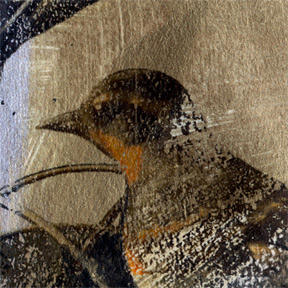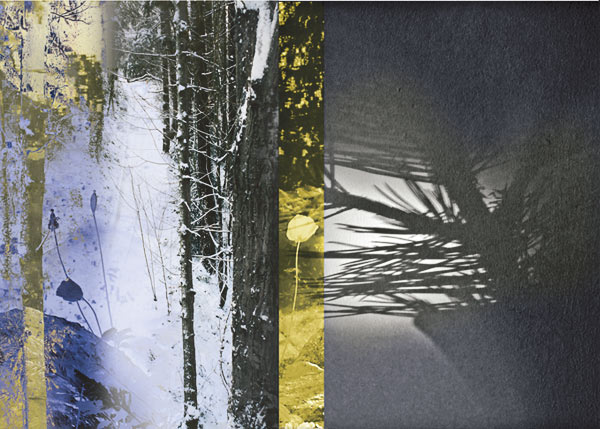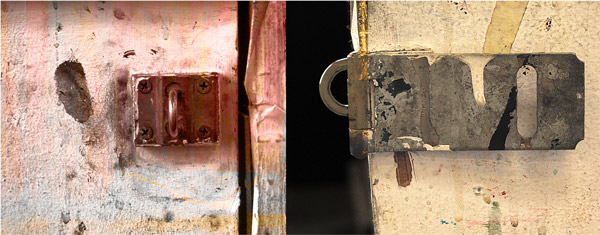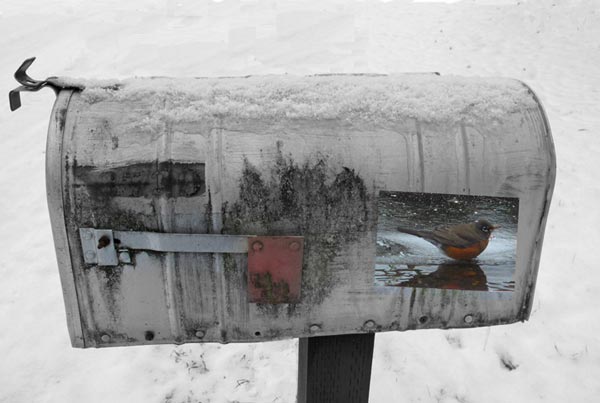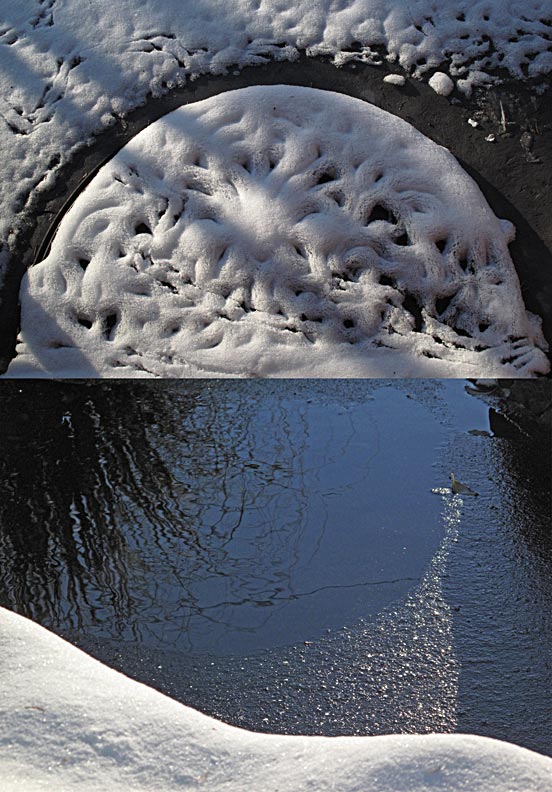On New Years morning a Varied Thrush made a rare appearance in the bare maple above the pond. I photographed him through the window and a few hours later made a transfer print from the photograph onto layers of metallic silver, gold and luminescent white. I made four prints, each time trying new ways of burnishing the transparency. I found that by spraying water on the actual transparency material I could get a feeling of old world mezzotint–with no control. Then I started brushing the painted paper with water instead, using varying pressure to gradually adhere the ink with more fidelity to the plate.
I have a new Epson 3880 and it behaves very differently from the 2400. Previously I used alcohol to make transfers, but it left a thin skin on the paper resistant to subsequent overlays. The ability to transfer with water alone is exciting–no toxic fumes, and the surface is lovely, much more like silkscreen. I am finding that the transfer film has to sit for at least ten minutes after it comes out of the printer–it seems that the ink then “cures” and lifts more readily to water or to an acrylic medium, like opaque matte gel.
In photographic mixed media work I am looking for an immediacy of narrative in which I can look onto my world, capture it, and engage in a process that reveals more about the experience than I “know” in the moment. It is intimate and magical because through the process of pulling the print I can slow time down and go back to the initial glimpse of the experience of the “real,” of what I thought I saw– before it has been given language. For this afternoon I felt as not that I was looking through glass at a bird, but that I perched in the tree, privileged to visit the first bright day of the new year with the bird’s own eyes.

